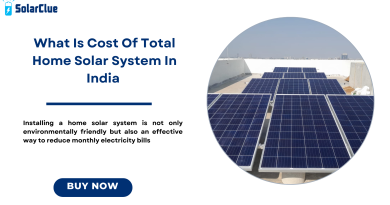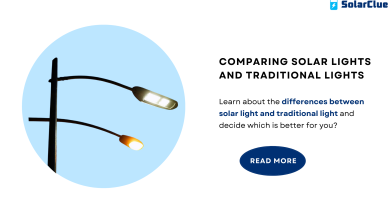How To Repair Solar Panel?
Solar panels are a long-term investment in renewable energy, but like any technology, they can encounter issues over time. Understanding common problems and knowing how to address them can help maintain the efficiency and lifespan of your solar system. This guide will cover everything from identifying and diagnosing issues to performing minor repairs and knowing when to call in a professional.
Table of Contents
- 0.1 Common Solar Panel Problems and Their Causes
- 0.2 Identifying and Diagnosing Solar Panel Issues
- 0.3 DIY Repairs for Minor Damage
- 0.4 When to Seek Professional Assistance
- 0.5 Safety Precautions for Solar Panel Repairs
- 0.6 The Impact of Repairs on Solar Panel Performance and Warranty
- 0.7 Tools and Equipment Needed for Solar Panel Repairs
- 0.8 Troubleshooting Common Repair Issues
- 0.9 The Future of Solar Panel Repair Technology
- 0.10 Case Studies of Successful Solar Panel Repairs
- 1 Frequently Asked Questions (FAQs)
Common Solar Panel Problems and Their Causes
Solar panels are designed to be durable, but certain problems can arise, including:
| Problem | Description | Causes |
|---|---|---|
| Cracks | Visible cracks on the surface of the panel | Impact damage, extreme temperature fluctuations |
| Hot Spots | Localized areas of overheating on the panel | Shading, dirt accumulation, internal short circuits |
| Electrical Faults | Issues with wiring or connections | Poor installation, rodent damage, corrosion |
| Delamination | Separation of the protective layers of the panel | Manufacturing defects, prolonged exposure to harsh weather |
| Yellowing | Discoloration of the panel’s surface | UV radiation, poor-quality materials |
| Reduced Output | Decrease in power generation | Aging, micro-cracks, dirt, and debris accumulation |
Identifying and Diagnosing Solar Panel Issues
Before attempting any repairs, it’s crucial to accurately identify and diagnose the problem:
- Visual Inspection: Regularly check for visible damage like cracks, discoloration, or debris on the panels.
- Performance Monitoring: Use a solar monitoring system to track energy output. A significant drop in production can indicate an issue.
- Thermal Imaging: Use a thermal camera to identify hot spots, which appear as brighter areas on the image.
- Multimeter Testing: Test the voltage and current output of each panel to detect electrical faults.
DIY Repairs for Minor Damage
For minor issues, you might be able to perform some repairs yourself:
- Cleaning Panels: Regular cleaning can remove dirt and debris that cause shading and hot spots. Use a soft brush, mild detergent, and water.
- Repairing Minor Cracks: Small cracks can be sealed with a UV-resistant resin to prevent further damage.
- Reconnecting Loose Wires: If you find loose or disconnected wires, ensure they are securely reconnected and insulated.
Important Note: Always ensure the system is turned off before attempting any repairs to avoid electric shock.
When to Seek Professional Assistance
While some repairs are manageable, more complex issues require professional help:
- Electrical Faults: If you detect electrical issues like shorts or faulty connections, it’s best to contact a certified technician.
- Severe Cracks: Panels with significant cracks may need to be replaced rather than repaired.
- Hot Spots: Persistent hot spots could indicate a deeper issue that requires professional diagnosis and repair.
- Delamination: This is a complex issue that should be addressed by a professional to ensure the integrity of the panel is maintained.
Safety Precautions for Solar Panel Repairs
Safety should always be your priority when working on solar panels:
- Turn Off the System: Always shut down the solar system completely before attempting any repairs.
- Use Insulated Tools: Ensure all tools used are insulated to prevent electric shock.
- Work in Pairs: If possible, have someone assist you, especially when working on rooftops.
- Protective Gear: Wear gloves, safety glasses, and appropriate footwear to minimize risk.
The Impact of Repairs on Solar Panel Performance and Warranty
Performing repairs on your solar panels can affect both their performance and warranty:
- Performance: Minor repairs, when done correctly, can restore performance. However, improper repairs may lead to further damage and efficiency loss.
- Warranty: DIY repairs might void the warranty. It’s important to check the warranty terms before attempting any fixes. For complex issues, always use a certified technician to preserve the warranty.
Tools and Equipment Needed for Solar Panel Repairs
Having the right tools on hand is essential for effective repairs:
- Multimeter: For measuring voltage, current, and resistance.
- Thermal Camera: To identify hot spots and temperature anomalies.
- UV-Resistant Resin: For sealing minor cracks.
- Insulated Tools: For safety during electrical work.
- Cleaning Supplies: Soft brush, mild detergent, and water for cleaning panels.
- Safety Gear: Gloves, safety glasses, and harnesses if working at heights.
Troubleshooting Common Repair Issues
Even with the right tools and knowledge, you may encounter challenges during repairs:
- Persistent Hot Spots: If hot spots reappear after cleaning and inspection, there may be an internal issue requiring professional evaluation.
- Voltage Drops: If a panel’s voltage drops after reconnecting wires, check for corrosion or loose connections that might need replacing.
- Crack Propagation: If cracks continue to grow after applying resin, the panel may be too damaged and should be replaced.
The Future of Solar Panel Repair Technology
Advancements in solar technology are making repairs easier and more efficient:
- Self-Healing Materials: Future panels may use materials that can heal small cracks automatically.
- Remote Diagnostics: Smart solar systems will soon be able to diagnose and report issues in real-time, reducing the need for manual inspections.
- Advanced Sealants: New materials may offer more durable solutions for sealing cracks and other minor damage.
Case Studies of Successful Solar Panel Repairs
- Residential Solar Repair: A homeowner noticed a significant drop in power output. After a visual inspection, they found several panels had minor cracks. Applying a UV-resistant resin restored the panels’ efficiency without the need for replacements.
- Commercial Solar System: A business with a large solar array experienced repeated hot spots due to shading from a nearby building. The installation of microinverters allowed the system to bypass shaded panels, improving overall performance.
Frequently Asked Questions (FAQs)
Q1: Can I repair a cracked solar panel myself? A1: Minor cracks can be sealed with a UV-resistant resin, but major cracks should be handled by professionals to avoid further damage.
Q2: How can I tell if my solar panel has a hot spot? A2: Hot spots can be detected using a thermal camera. They appear as brighter areas on the thermal image.
Q3: Will repairing my solar panels void the warranty? A3: DIY repairs might void the warranty. Always check the warranty terms and consider contacting a professional for complex repairs.
Q4: What should I do if my solar panel system stops producing power? A4: First, check for obvious issues like loose connections or debris on the panels. If the problem persists, contact a professional technician.
Q5: Is it safe to work on solar panels myself? A5: While minor repairs can be done safely with the right precautions, electrical faults and major issues should be left to professionals.
Q6: What tools do I need to repair my solar panels? A6: Essential tools include a multimeter, thermal camera, UV-resistant resin, insulated tools, and safety gear.
Q7: How often should I inspect my solar panels for issues? A7: Regular inspections every 6-12 months are recommended to catch and address any potential issues early.
Q8: Can I prevent common solar panel issues? A8: Regular cleaning and maintenance can prevent many common issues like hot spots and dirt accumulation.
Solar panels are a valuable investment, and proper maintenance and repair can help ensure they continue to perform efficiently for years. Whether you’re dealing with minor issues or more complex problems, understanding the repair process and knowing when to seek professional help is key to protecting your solar investment.


